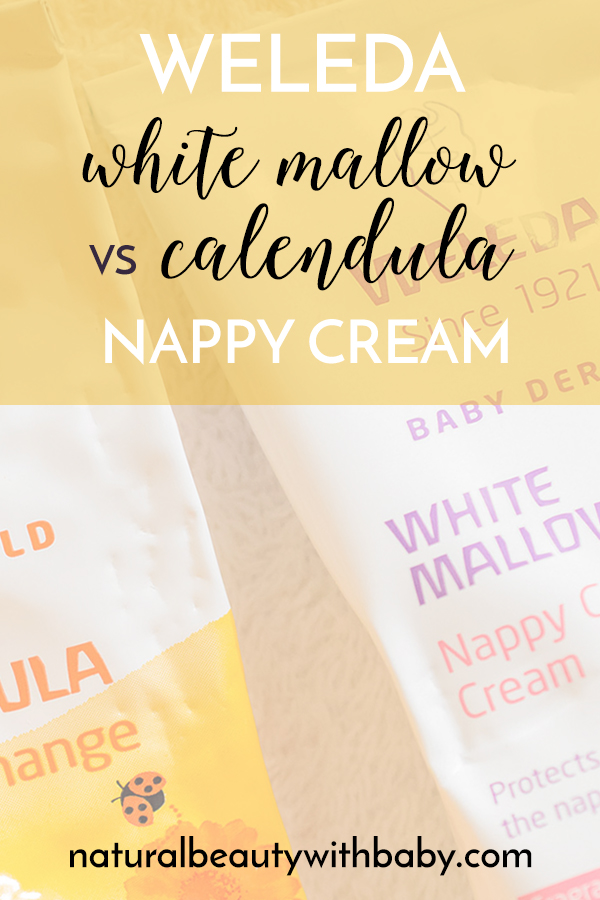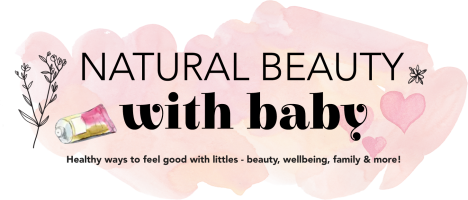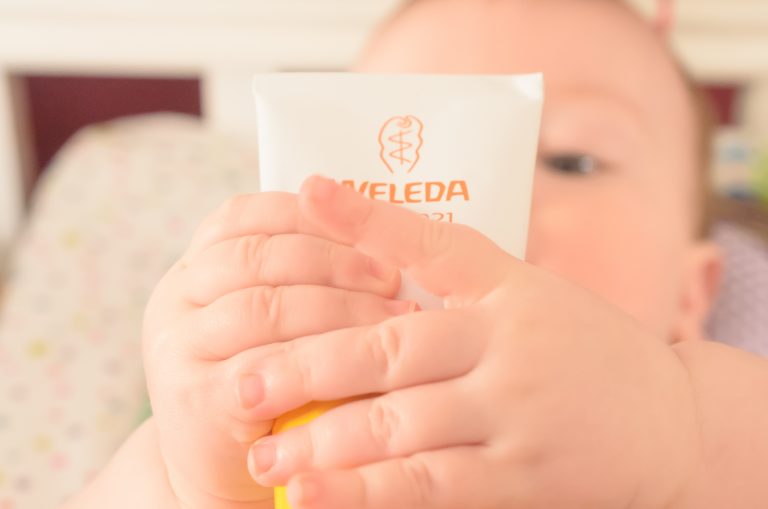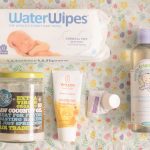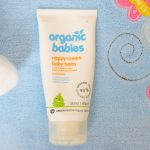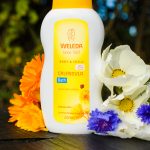In this post, I compare Weleda nappy creams to see which is best for your baby or toddler. We’ve been regular users of Weleda White Mallow Nappy Change Cream since Jonah was born. Recently we were gifted a tube of Weleda Calendula Nappy Change Cream by our friend (thanks Andrea!) and were really happy to give it a go. We love the Weleda Calendula range since it is so effective, gentle on skin, and smells great. This nappy cream is no exception to the rest of the range.
In this post we’ll look at the similarities and differences between the two nappy creams, research all the lovely ingredients, and make a choice to which is most suited to our baby.
First a bit of background on Weleda. From their website:
Weleda’s goal is to maintain, enhance and restore the health of people. What started in 1921 as a pharmaceutical laboratory, with its own medicinal plant garden, is today a world-leading manufacturer of holistic natural cosmetics as well as pharmaceuticals for anthroposophical therapy.
I love this brand and have followed it since discovering my first Weleda product over fifteen years ago. In case you were wondering, anthroposophy is a spiritual movement founded in 1913 by Rudolf Steiner. Anthroposophy is behind some interesting stuff, like Steiner schools, but it also sparks controversy due to some of Steiner’s beliefs.
It’s clear to see that the herbal ingredients in the nappy creams have inspired the beautiful designs of the packaging. Calendula Nappy Change Cream comes in an orange, yellow, and white tube, and White Mallow Nappy Change Cream in a purple, pink, and white tube. Both tubes are metal with a screw cap.
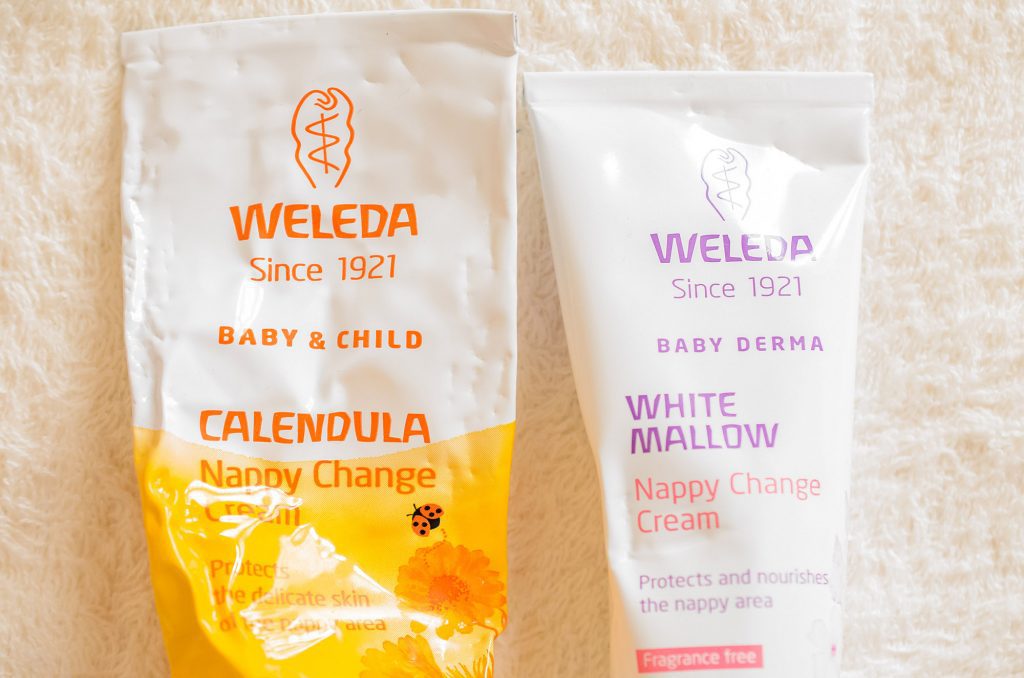
Cream consistency
The creams are thick, white, and need some gentle dabbing to work them into the skin. This is how the creams look when applied to my finger, for comparison. As you can see, the consistency of the creams is very similar.
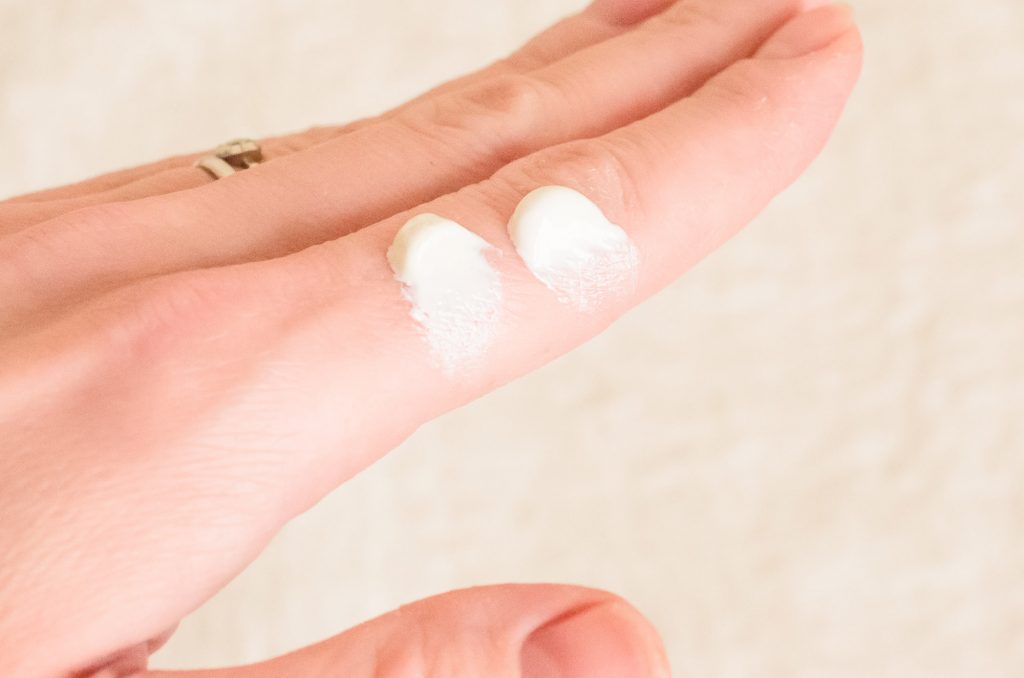
Weleda nappy creams ingredients comparison
Let’s compare the ingredients in Weleda’s two nappy creams:
| Calendula | White Mallow | |
| Moisture barriers | Zinc oxide Lanolin | Zinc oxide Beeswax |
| Active ingredients | Calendula Chamomile | Mallow Pansy |
| Carrier oils | Sesame Sweet almond | Sesame Coconut |
| Fragrance | Natural fragrance | No fragrance |
Moisture barriers
Zinc oxide
Both the nappy creams contain zinc oxide – an astringent and anti-microbial white mineral powder that acts as a moisture barrier. It helps to repel urine and wet fecal matter that may come into contact with the delicate skin around the bottom, causing nappy rash.
Lanolin
The Calendula Cream contains lanolin – a natural ingredient derived from sheep’s wool. Its molecular structure closely resembles the lipids found in human skin, which makes it a great moisturiser. Its use in nappy cream keeps baby’s bottom well moisturised and counteracts the drying action of zinc oxide. Lanolin can be a problem for some skins, so the White Mallow Cream is a better choice for babies with sensitive skin. Unfortunately there’s no way to tell if your baby finds lanolin irritating without allergy testing, or trying a product. It is said that some lanolin reactions are caused by using inferior products from less than scrupulous manufacturers, which isn’t what you’d expect from Weleda.
Beeswax
This natural moisturiser and soothing addition to the White Mallow Nappy Cream, counteracting the drying action of zinc oxide. Beeswax is less reactive than lanolin but is more expensive.
Active ingredients
The calendula herb
Calendula has a long history of use in skin care. It is anti-bacterial, anti-inflammatory, and promotes healing. Weleda’s entire Calendula range for babies is based on this herb – the humble pot marigold. Interestingly it’s used for treating hemorrhoids in adults. If you’re suffering with postpartum piles, some Calendula Nappy Cream might help.
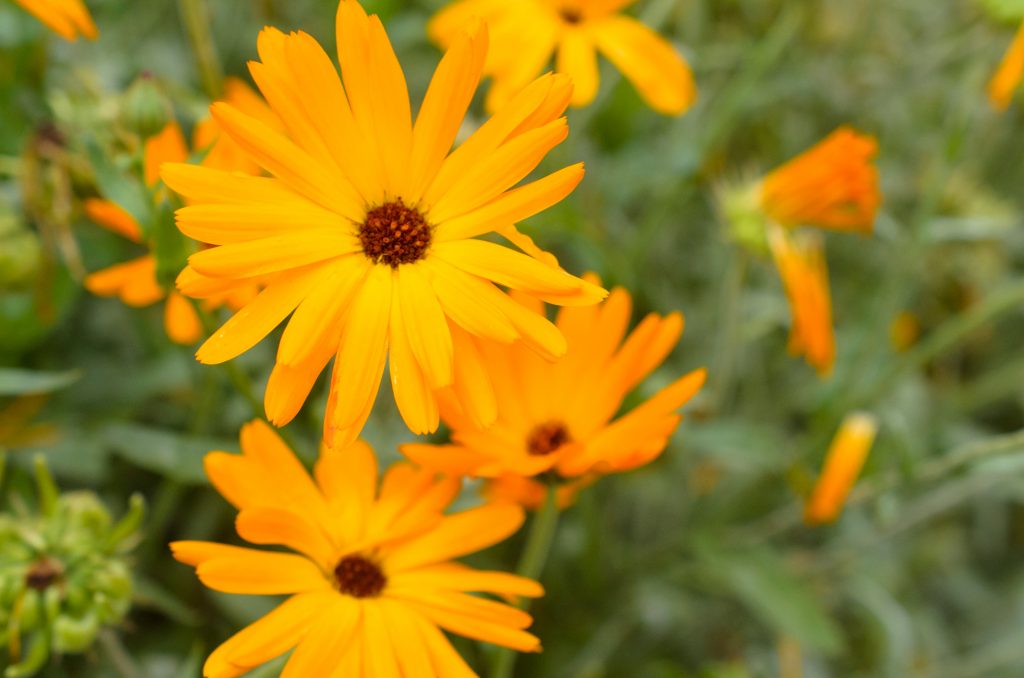
The chamomile herb
Chamomile, too, has a long history in skincare. It is known to calm the skin, so is ideal in a nappy cream. It is also a pain-reliever, so can help if baby’s bottom is a little sore. It’s a traditional remedy for hemorrhoids because it brings down swelling and soothes irritation so well. In Mexico they use chamomile tea to relax the abdominal muscles and bring about a sense of calm following birth.
Do you use water and cotton wool to clean baby’s bottom? Make a soothing chamomile infused wash by steeping a chamomile tea bag in some hot water, allowing it to cool, then using the chamomile infusion to wipe your baby.
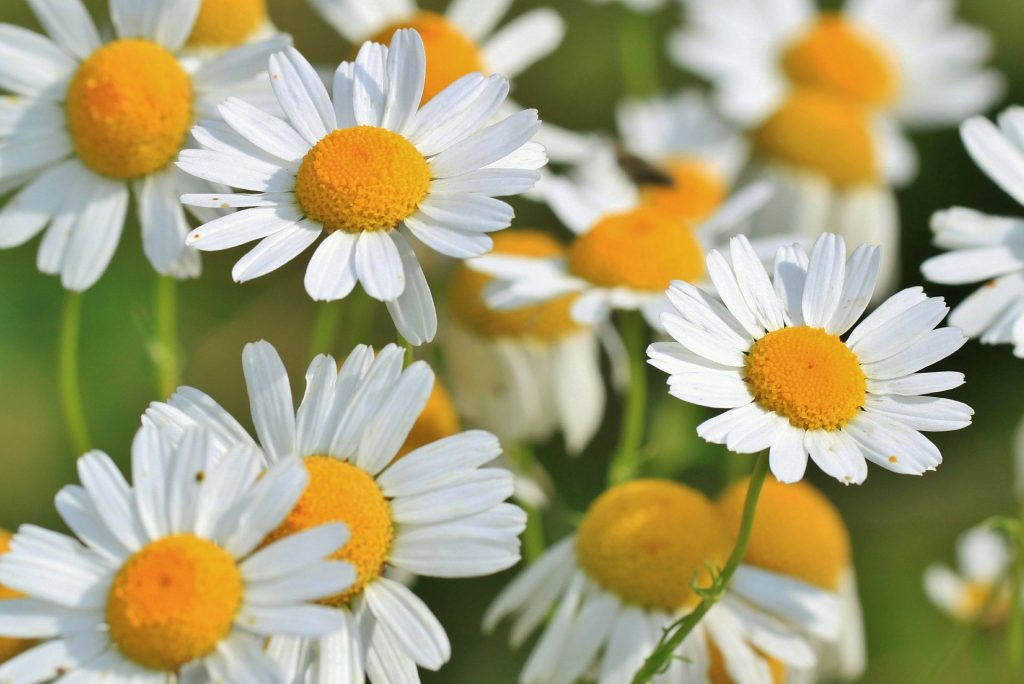
The white mallow herb
The white mallow plant secretes a mucous-type substance – called mucilage – which when added to skincare products such as nappy creams moisturises, protects, reduces swelling – and kills bacteria, without adding fragrance. White mallow is gentle and soothing to baby’s skin.
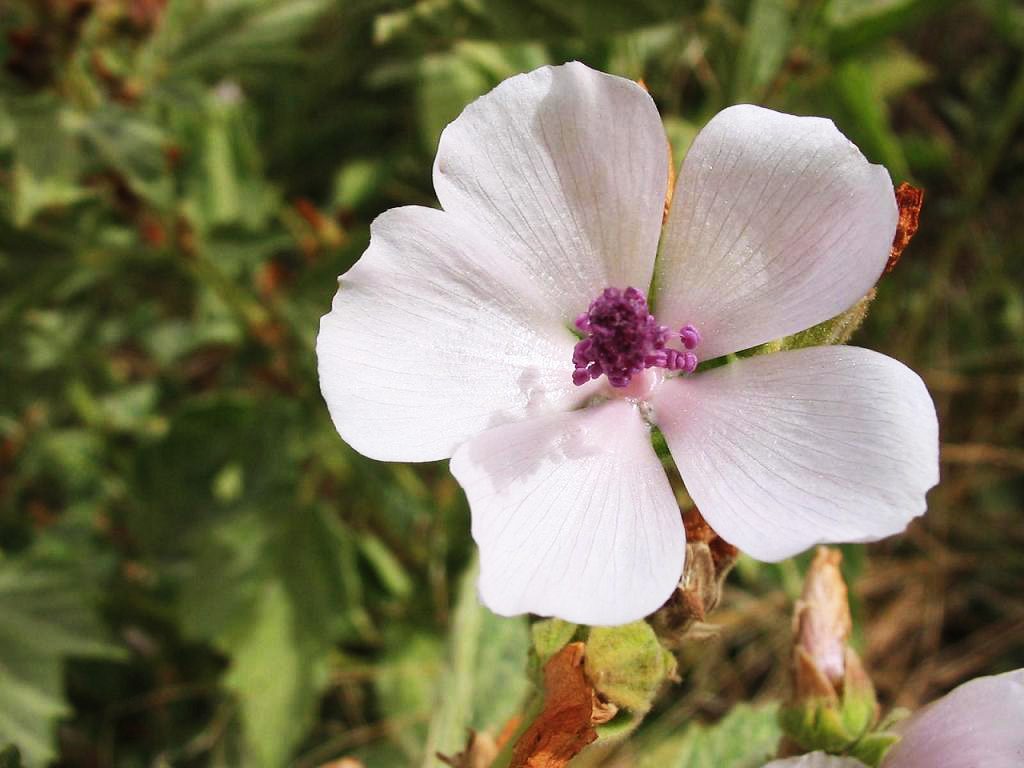
The pansy herb
Pansy is known for its soothing and healing properties and is used to treat eczema and other skin complaints. It makes a great choice in a nappy cream as it can also relieve pain.
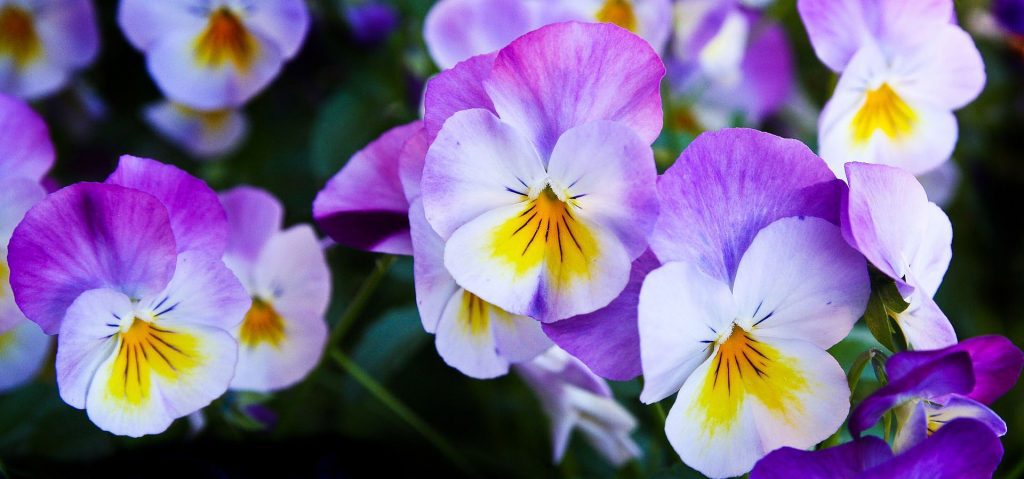
Carrier oils
Both nappy creams contain sesame oil. Sesame is a great oil to use in nappy cream since it has anti-inflammatory and anti-bacterial value, along with moisturising properties.
The Calendula Cream contains sweet almond oil – which is light, easily absorbed, and ideal for baby skin as it is so gentle.
The White Mallow Cream contains coconut oil – widely known to be anti-bacterial, anti-fungal, and a light skin moisturiser.
Fragrance
If you enjoy scented cream, you may prefer the Calendula Nappy Cream since it has a gorgeous fragrance like the other products in the same range – reminiscent of ylang ylang and chamomile essential oils.
Weleda states that the fragrance is derived from natural sources, so there’s no need to worry about artificial chemical parfum. However, some babies can be sensitive to natural essential oils.
Which Weleda nappy cream is right for my baby?
We’ve looked at the natural ingredients both these creams contain, and seen that the choice of herbs make great sense in holding back nappy rash, reflecting Weleda’s experience as holistic skincare manufacturers. Whilst these ingredients are natural and soothing, they are also effective pain relievers and healers.
Choose White Mallow Nappy Cream if your baby has any sensitivity to lanolin or fragrances from essential oils, or Calendula Nappy Cream for a sweeter smelling alternative.
If price is a factor, bear in mind that the White Mallow Cream is slightly more expensive than the Calendula Cream, and comes in a smaller tube (50ml and 75ml respectively).
Both Weleda nappy creams work well when used sparingly to protect against nappy rash, by soothing redness and relieving soreness, but they’re not a treatment once nappy rash really sets in. Luckily Jonah and I haven’t experienced a serious case of nappy rash, and I think perhaps this is in part due to Weleda’s nappy creams, and of course changing his nappy regularly.
The nappy creams make great alternatives to chemical-laden mainstream nappy creams such as Sudocrem, Johnson’s, Dove Baby, etc. Recommended by knowledgeable nappy experts on the web, I’m sure they’ll keep your baby’s bottom protected from nappy rash – they have worked so well for us. If in doubt let baby’s bum breathe by going nappy free for half an hour or so per day, and visit your doctor for professional advice.
Making face paints with Weleda nappy creams
Did you know you can use nappy cream to make homemade face paint? Yes, it’s true!
Buy Weleda nappy creams
- Weleda Calendula Nappy Cream, £5.56 at BigGreenSmile
- Weleda White Mallow Nappy Cream, £8.95 at BigGreenSmile
Have you tried Weleda nappy creams? Let me know in the coments!

